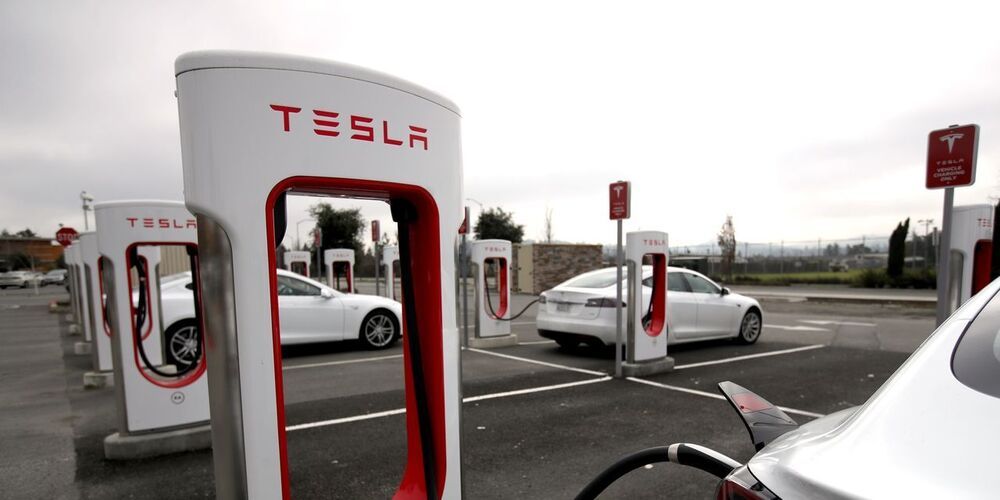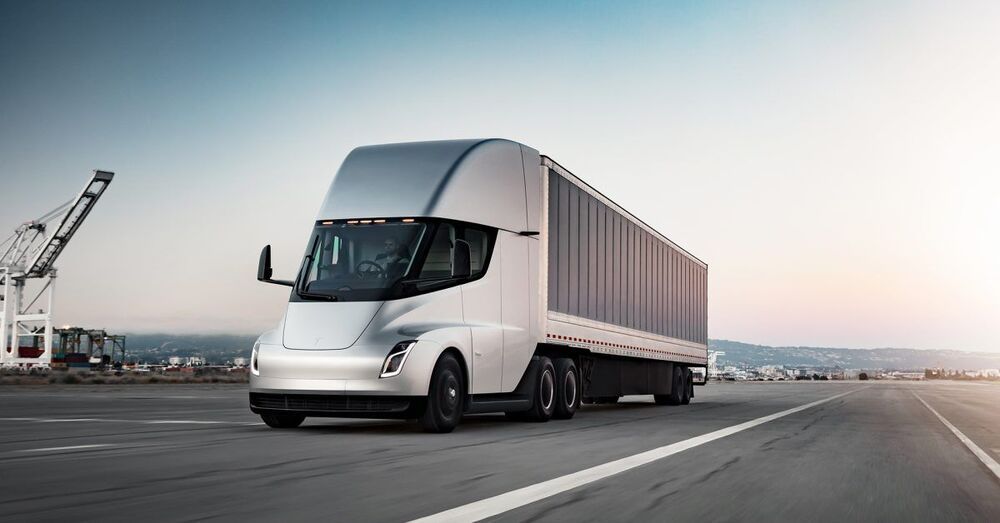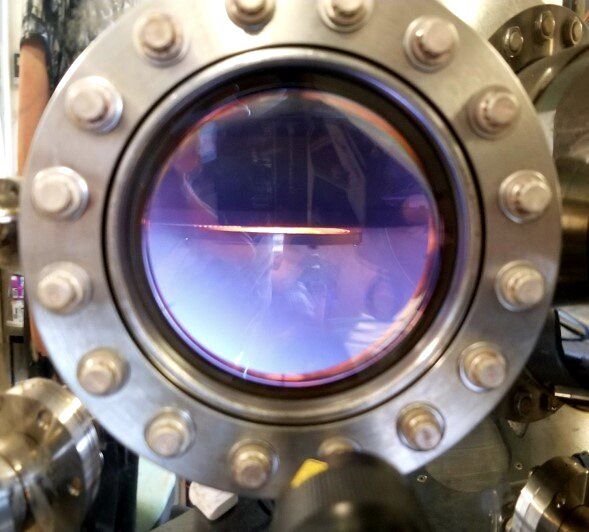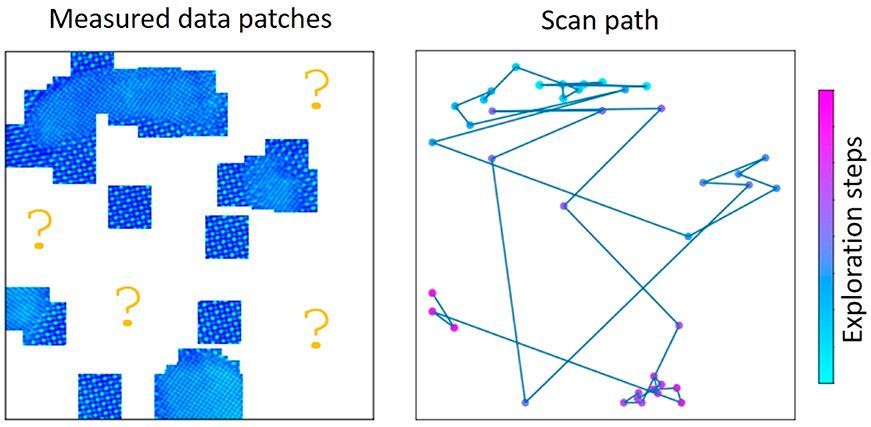It was not immediately clear whether adapters would be needed.
Tesla stock TSLA, +2.21% edged lower in the extended session Tuesday after ending the regular trading day up 2.2%.


After years of delays, Tesla is finally about to start production of Tesla Semi, its all-electric semi-truck.
The whole truck industry is watching.
While there are already a few electric trucks on the road, none of them have the specs enabling longer range hauling in a class 8 semi-truck, like the Tesla Semi is promising.
Get Surfshark VPN at https://surfshark.deals/undecided and enter promo code UNDECIDED for 83% off and 3 extra months for free! What if we could take a battery pack’s weight out of the equation? Imagine a car that has no battery pack because the car’s structural battery is the pack? Let’s explore massless energy storage and how a recent breakthrough could be a dramatic shift in how we can store energy in phones, planes, cars… you name it. Watch Exploring When Solid State Batteries Will Arrive: https://youtu.be/3PyXQ0UXk9w?list=PLnTSM-ORSgi7UWp64ZlOKUPNXePMTdU4dSimulation from FLOW-3D®, developed by Flow Science, Inc. (www.flow3d.com).Video script and citations:
https://undecidedmf.com/episodes/exploring-massless-energy-b…hFollow-up podcast:
Video version — https://www.youtube.com/channel/UC4-aWB84Bupf5hxGqrwYqLA
Audio version — http://bit.ly/stilltbdfm.
👋 Support Undecided on Patreon!
https://www.patreon.com/mattferrell.
⚙️ Gear & Products I Like.
Tesla and smart home gear:
https://kit.co/undecidedmfUndecided Amazon store front:
http://bit.ly/UndecidedAmazonFun, nerdy t-shirts:
http://bit.ly/UndecidedShirtsAbstract Ocean Tesla Accessories:
15% Discount — Code: “Undecided“
http://bit.ly/UndecidedAOJeda Tesla Wireless Charger/USB Hub:
http://bit.ly/UndecidedJedaTesla Referral Code:
Get 1000 free supercharging miles.
or a discount on Tesla Solar & Powerwalls.
https://ts.la/matthew84515Visit my Energysage Portal:
Research solar panels and get quotes for free!
http://www.energysage.com/p/undecided/ Or find community solar near you:
https://communitysolar.energysage.com/?rc=p-undecided.
👉 Follow Me.
https://twitter.com/mattferrell.
https://twitter.com/undecidedMFInstagram.
https://www.instagram.com/mattferrell.
https://www.instagram.com/undecidedmfFacebook.
https://www.facebook.com/undecidedMF/Website.
https://undecidedmf.com.
📺 YouTube Tools I Recommend.
Audio file(s) provided by Epidemic Sound.
http://bit.ly/UndecidedEpidemicTubeBuddy.
https://www.tubebuddy.com/undecidedVidIQ
https://vidiq.com/undecided.
I may earn a small commission for my endorsement or recommendation to products or services linked above, but I wouldn’t put them here if I didn’t like them. Your purchase helps support the channel and the videos I produce. Thank you.

A team led by a researcher from the University of Sydney has developed a low-cost, sustainable, and readily available technology that can dim the screens of electronic devices, anti-reflection automobile mirrors, and smart architectural windows at a fraction of the cost of current technology.
It would replace one of the world’s scarcest—yet highly ubiquitous in use—modern materials: indium. A rare chemical element, that it is widely used in devices such as smartphones and computers, windscreen glass and self-dimming windows.
Although small amounts are used to manufacture smart device screens, indium is expensive as it is hard to source; it naturally occurs only in small deposits. Industrial indium is often made as a byproduct of zinc mining, which means a shortage could occur if demand for optoelectronic devices—such as LCDs and touch panels—ramps up.

SEOUL—The smartphone industry is showing battle scars from the world-wide chip crunch.
Shipments are slowing and customers are seeing their first significant price increases in years. Some companies have had to scale back production and delay new releases. All this has halted what had been a strong start to the year.
Smartphone makers, for much of the year, avoided the parts disruptions faced in the auto, personal computer and home-appliance industries. Phone manufacturers purchase key parts roughly a half a year in advance, but now those stockpiles have shrunk.
Plastic waste, a material that can take centuries or more to disappear, is causing irreparable damage to the planet. At least 8 million tons of plastic end up in the ocean each year. In many cases, specifically in more developed countries, plastic waste is disposed of responsibly and sent to facilities to be sorted, recycled, or recovered. However, plastic waste generated in developing countries typically ends up in dumps or open, uncontrolled landfills — most of which eventually enter the ocean either through transport by wind or tides or through waterways such as rivers or wastewater. Now, many companies are recycling this waste into useful products, such as sportswear, affordable homes, electric cars, roads, etc. One of them is Gjenge Makers Ltd, a sustainable, alternative, affordable building products manufacturing company that transforms plastic waste into durable building materials. These include paving blocks, paving tiles, and manhole covers.
Nzambi Matee has used her engineering skills to develop the process that involved mixing recycled waste plastic and sand. Matee gets the wasted plastic from packaging factories for free, although she pays for the plastic she gets from other recyclers. The company workers take plastic waste, mix it with sand, and heat it up, with the resulting brick being five to seven times stronger than concrete.
Matee’s team uses the type of plastic waste that can’t be processed anymore; that cannot be recycled. Since plastic is fibrous in nature, it makes the brick an extremely strong and durable material. Besides, compared with regular bricks, Gjenge Makers’ ones are lighter, so transportation and installation are achieved at faster rates.
Gjenge Makers produces between 1000 to 1500 paving bricks every day in different sizes and colors. The bricks are usually made using high-density polyethylene, used in milk and shampoo bottles; low-density polyethylene, often used for bags for cereals or sandwiches; and polypropylene, used for ropes, flip-top lids, and buckets. However, it does not use polyethylene terephthalate or PET, which are commonly used in plastic bottles.

Machine learning and artificial intelligence (ML/AI) are rapidly becoming an indispensable part of physics research, with domain applications ranging from theory and materials prediction to high-throughput data analysis. In parallel, the recent successes in applying ML/AI methods for autonomous systems from robotics to self-driving cars to organic and inorganic synthesis are generating enthusiasm for the potential of these techniques to enable automated and autonomous experiments (AE) in imaging. Here, we aim to analyze the major pathways toward AE in imaging methods with sequential image formation mechanisms, focusing on scanning probe microscopy (SPM) and (scanning) transmission electron microscopy ((S)TEM).
Electric vehicles are about to take over American roadways, which means there’s a prime opportunity to replace gas station signs with something better.

Last week, Amazon patented a delivery system involving self driving trucks carrying several small robots that deliver packages to homes.
Once all the small delivery bots are back on board, the truck (which would have a human driver in the near future but likely be autonomous in the less-near future) drives off to the next block—its fleet of mini-me’s restocking with new packages en route—and the scene repeats itself.
Cool/creepy? Good/bad? Depends on your perspective. On the one hand, employing fewer humans would bring Amazon more cost savings in the long run, which it would ideally pass on to customers and re-invest in other parts of the business, leading to hiring more people in a virtuous circle.
But on the other hand, it’s not hard to imagine the secondary vehicles going awry; there would be plenty of obstacles for them to get around (dogs, bikes, sprinklers, and children are just a few that come to mind), and given how hard it’s been to bring self-driving cars to market, Amazon may be underestimating the challenge of maneuvering the small delivery vehicles even 100 feet from truck to doorstep.

Sorry, we’re having trouble playing this video.
Learn More.
The New York Times.
The Utah Division of Wildlife Resources said that last week it used planes to stock fish in about 200 lakes that are inaccessible by vehicle. The division said it has aerial-stocked fish since the 1950s and that they have a high survival rate.
A widely shared video shows fish bursting out of a small plane, highlighting a method the state has used for more than a half-century to restock lakes.